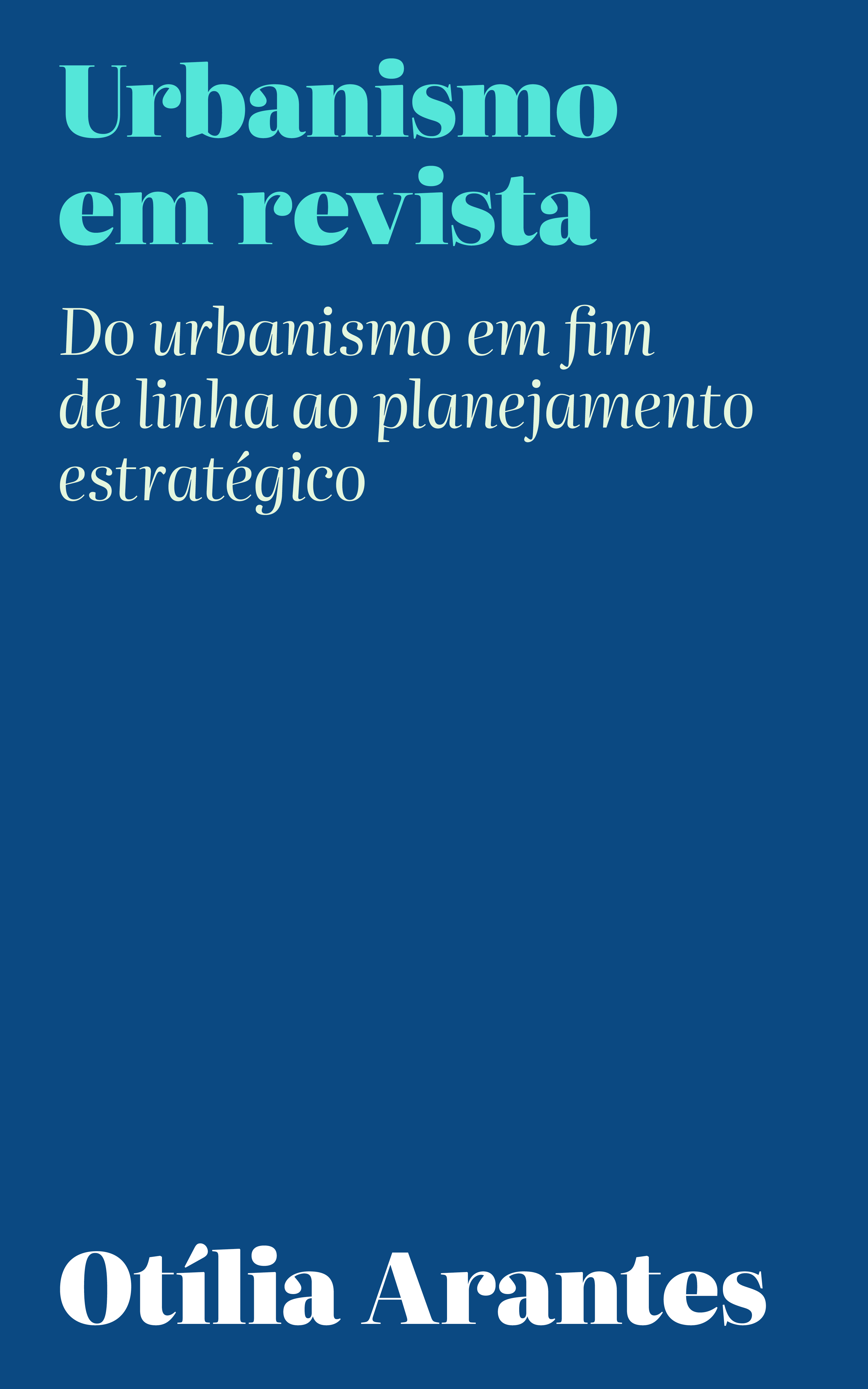Urbanism Reviewed
From terminal urbanism to strategic planning
2012
Synopsis
The first part of this collection, which has been especially organized for sentimentodadialetica.org, comprises five texts (mostly conferences, one of them never before published), written from 1993 to 2000, which represented important turns in the author's studies on the impasses of urbanism: from the exhaustion of the Modern Movement’s planning model to the prescription for “modest” interventions, which quickly turned into an apology for the fragmented and even chaotic city, eventually reviving the issue of planning, but in new terms—the “Strategic Planning”, which was beginning to spread throughout in Brazil with the presence of the Catalan masters. Mentioned at the end of the 1993 conference that opens the sequence (“Urbanismo em fim de linha”), strategic planning would finally be detailed at the International Symposium on Urban Spaces and Socio-Spatial Exclusion organized by FAU-USP at the end of 1998, in a conference entitled “Culture in the New Urban ‘Strategies’”, when, possibly for the first time in Brazil, such an acid criticism was made of urban “entrepreneurship”, which suited this new model of city “management”. Although the conference was made available to the public and was the reason for numerous debates, including a debate with one of the formulators of the model we were importing, Jordi Borja, at the 4th São Paulo Architecture Biennial (1999), it had never been published before. An abridged version can be found in an essay named “Vendo Cidades” from the same period. Finally, among the numerous subsequent lectures and texts by the author on the subject, we chose the speech given at the Goethe Institute in São Paulo (2000) about “event-cities”: “Culture and Urban Transformation”, a first draft of the essay that would be part of A Cidade do Pensamento Único (which can be found on this website in “Culture, Power and Money in City Management”).
The second part comprises a long interview given to Adalberto da Silva Retto Jr. (published by Vitruvius), in which, based on the author’s book Berlim e Barcelona: Duas Imagens Estratégicas (Annablume, 2012), many issues raised in previous texts are recapitulated, now focused mainly on the transformations that took place in Barcelona during the 1992 Olympics and Berlin after the fall of the wall. Finally, there are two reviews included as an appendix. The first one is about Camillo Sitte’s book City Planning According to Artistic Principles (a must-read for the contextualists or place theorists mentioned in the first texts of this collection). The second review is about Ermínia Maricato’s book A metrópole na periferia do capitalismo (HUCITEC 1996) and is an important addition to the texts and speeches gathered here, as it questions the allegedly “successful” cities, describing the disastrous effects of mundialization, especially for the cities of peripheral capitalism.
Keywords: Barcelona, Berlin, Bohigas, Borja, Camillo Sitte, Castells, Chaotic City, Fragmented City, Occasional Cities, Peripheral Cities, Contextualism, Corbusier, Market Culturalism, Indovina, Occasional Interventions, Logan, Location, Growth Machine, Molotch, Mundialization, Non-place, Peter Hall, Peter Eisenman, Planning, Strategic Planning, Purini, Teyssot, Urbanism.

Series
Categories
License

This work is licensed under a Creative Commons Attribution-NonCommercial-NoDerivatives 4.0 International License.


